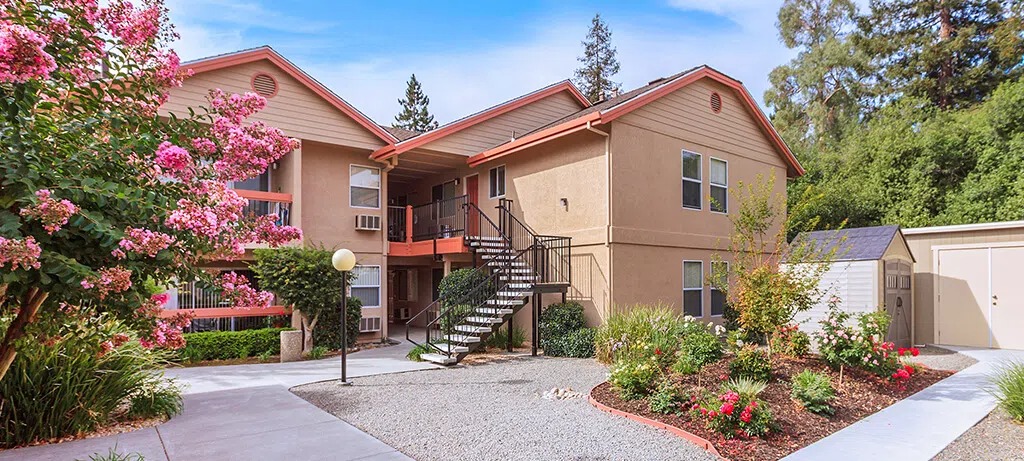Unlock the Secrets to Selling Your Home for Top Dollar
Are you ready to sell your home and want to ensure you get the best possible offer? This guide will provide you with essential strategies, backed by data and expert insights, to help you navigate the home-selling process successfully.
The Importance of Accurate Pricing
Setting the right price is the cornerstone of a successful home sale. According to the National Association of Realtors (NAR), homes that are priced correctly from the start sell 50% faster than those that are overpriced. To determine the optimal listing price, conduct thorough research on comparable properties in your area, known as "comps." These are homes similar in size, condition, and location that have recently sold. A well-informed pricing strategy can attract more buyers and lead to competitive offers.
Enhance Curb Appeal
First impressions are critical in real estate. A study by the National Association of Realtors found that 94% of agents believe curb appeal is essential in attracting buyers. Simple enhancements can significantly impact your home's attractiveness. Consider these upgrades:
- Landscaping: Trim hedges, mow the lawn, and plant seasonal flowers.
- Exterior Maintenance: Power wash siding and clean gutters.
- Entryway: Paint or replace the front door and ensure outdoor lighting is functional.
Investing in curb appeal can yield a return of up to 200% on your investment, making it a wise choice for sellers.
Declutter and Stage Your Home
A clutter-free environment allows potential buyers to envision their lives in your space. The NAR reports that staged homes sell 73% faster than non-staged homes. Start by decluttering every room, removing personal items, and organizing closets. Consider hiring a professional stager who can highlight your home's strengths through strategic furniture placement and decor choices. If hiring a stager isn’t feasible, focus on neutralizing your space with light colors and minimal decor.
Professional Photography Matters
In an age where most home searches begin online, high-quality photography is crucial. Listings with professional photos receive 61% more views than those with standard images, according to studies by Redfin. Invest in a skilled photographer who specializes in real estate to capture your home’s best features. Ensure they use wide-angle lenses and proper lighting to create inviting visuals that draw buyers in.
Timing Your Sale
The timing of your home sale can influence its success significantly. Historically, spring and summer months see increased buyer activity due to favorable weather conditions and school schedules. According to Zillow, homes listed between May 1st and May 15th sell for about 1% more than average. However, don’t overlook local market trends; sometimes a well-timed fall listing can yield positive results if inventory is low.
Mastering Negotiation Techniques
Once offers start coming in, effective negotiation becomes vital. The NAR indicates that homes typically receive multiple offers when priced competitively, leading to bidding wars that can drive up sale prices. Be prepared to counteroffer based on terms that align with your goals. Consider not just the offer price but also contingencies, closing timelines, and buyer financing status when making decisions.
Evaluate Buyer Offers Wisely
When reviewing offers, look beyond the price tag. A strong offer includes:
- Pre-approval Letter: Indicates financial readiness.
- Contingency Clauses: Fewer contingencies often mean a smoother transaction.
- Closing Timeline: Aligns with your moving plans.
A well-rounded offer may be more appealing than a higher price from a less qualified buyer.
Smooth Closing Process
Once you accept an offer, prepare for closing by staying organized and responsive. The closing process involves various steps including inspections, appraisals, and final negotiations on repairs or credits. According to NAR statistics, homes that have been properly prepared for inspection tend to close faster—often within 30 days—compared to those requiring extensive negotiations post-inspection.
Conclusion
Selling your home for top dollar requires strategic planning and execution. By accurately pricing your property, enhancing its curb appeal, staging effectively, investing in professional photography, timing your sale wisely, negotiating skillfully, evaluating offers thoroughly, and preparing for a smooth closing process, you position yourself for success in today’s competitive market. With these insights at your disposal, you’re well-equipped to achieve a lucrative sale and move confidently into your next chapter.
Are you ready to sell your home and want to ensure you get the best possible offer? This guide will provide you with essential strategies, backed by data and expert insights, to help you navigate the home-selling process successfully.
The Importance of Accurate Pricing
Setting the right price is the cornerstone of a successful home sale. According to the National Association of Realtors (NAR), homes that are priced correctly from the start sell 50% faster than those that are overpriced. To determine the optimal listing price, conduct thorough research on comparable properties in your area, known as "comps." These are homes similar in size, condition, and location that have recently sold. A well-informed pricing strategy can attract more buyers and lead to competitive offers.
Enhance Curb Appeal
First impressions are critical in real estate. A study by the National Association of Realtors found that 94% of agents believe curb appeal is essential in attracting buyers. Simple enhancements can significantly impact your home's attractiveness. Consider these upgrades:
- Landscaping: Trim hedges, mow the lawn, and plant seasonal flowers.
- Exterior Maintenance: Power wash siding and clean gutters.
- Entryway: Paint or replace the front door and ensure outdoor lighting is functional.
Investing in curb appeal can yield a return of up to 200% on your investment, making it a wise choice for sellers.
Declutter and Stage Your Home
A clutter-free environment allows potential buyers to envision their lives in your space. The NAR reports that staged homes sell 73% faster than non-staged homes. Start by decluttering every room, removing personal items, and organizing closets. Consider hiring a professional stager who can highlight your home's strengths through strategic furniture placement and decor choices. If hiring a stager isn’t feasible, focus on neutralizing your space with light colors and minimal decor.
Professional Photography Matters
In an age where most home searches begin online, high-quality photography is crucial. Listings with professional photos receive 61% more views than those with standard images, according to studies by Redfin. Invest in a skilled photographer who specializes in real estate to capture your home’s best features. Ensure they use wide-angle lenses and proper lighting to create inviting visuals that draw buyers in.
Timing Your Sale
The timing of your home sale can influence its success significantly. Historically, spring and summer months see increased buyer activity due to favorable weather conditions and school schedules. According to Zillow, homes listed between May 1st and May 15th sell for about 1% more than average. However, don’t overlook local market trends; sometimes a well-timed fall listing can yield positive results if inventory is low.
Mastering Negotiation Techniques
Once offers start coming in, effective negotiation becomes vital. The NAR indicates that homes typically receive multiple offers when priced competitively, leading to bidding wars that can drive up sale prices. Be prepared to counteroffer based on terms that align with your goals. Consider not just the offer price but also contingencies, closing timelines, and buyer financing status when making decisions.
Evaluate Buyer Offers Wisely
When reviewing offers, look beyond the price tag. A strong offer includes:
- Pre-approval Letter: Indicates financial readiness.
- Contingency Clauses: Fewer contingencies often mean a smoother transaction.
- Closing Timeline: Aligns with your moving plans.
A well-rounded offer may be more appealing than a higher price from a less qualified buyer.
Smooth Closing Process
Once you accept an offer, prepare for closing by staying organized and responsive. The closing process involves various steps including inspections, appraisals, and final negotiations on repairs or credits. According to NAR statistics, homes that have been properly prepared for inspection tend to close faster—often within 30 days—compared to those requiring extensive negotiations post-inspection.
Conclusion
Selling your home for top dollar requires strategic planning and execution. By accurately pricing your property, enhancing its curb appeal, staging effectively, investing in professional photography, timing your sale wisely, negotiating skillfully, evaluating offers thoroughly, and preparing for a smooth closing process, you position yourself for success in today’s competitive market. With these insights at your disposal, you’re well-equipped to achieve a lucrative sale and move confidently into your next chapter.



